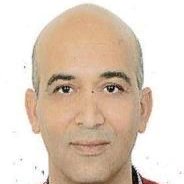International Journal of Image, Graphics and Signal Processing (IJIGSP)
IJIGSP Vol. 10, No. 8, 8 Aug. 2018
Cover page and Table of Contents: PDF (size: 947KB)
Efficient 2D Convolution Filters Implementations on Graphics Processing Unit Using NVIDIA CUDA
PDF (947KB), PP.1-8
Views: 0 Downloads: 0
Author(s)
Index Terms
Convolution algorithms, Sobel filter, Gaussian Blur, CUDA, GPU, CPU
Abstract
Convolution algorithms present a key component and a significant step in image processing field. Despite their high arithmetic complexity, these algorithms are widely used because of their great importance for extracting image properties and features. Convolution algorithms require significant computing time, for that we propose a GPU acceleration of these algorithms by using the programming language CUDA presented by NVIDIA. Since these algorithms consume a lot of computing power, we understand the impact of the implementation of this type of algorithm on the acceleration of processing. GPU implementation present a suitable path to achieve better results than other implementation , for that optimizing time consuming time consuming of applications became an increasingly important task in many research areas. The goal of this work is to try to boost convolution algorithms execution time by adopting GPU implementations to accelerate treatments and to achieve real time constraints.
Cite This Paper
Mouna Afif, Yahia Said, Mohamed Atri, " Efficient 2D Convolution Filters Implementations on Graphics Processing Unit Using NVIDIA CUDA ", International Journal of Image, Graphics and Signal Processing(IJIGSP), Vol.10, No.8, pp. 1-8, 2018. DOI: 10.5815/ijigsp.2018.08.01
Reference
[1]Rafael C Gonzalez and Richard E Woods. Digital Image Processing. Pearson, 3rd edition, 2007.
[2]Alex Krizhevsky, Ilya Sutskever, and Geo_rey E Hinton. Imagenet Classi_cation with Deep convolutional Neural Networks. In NIPS, pages 1097{1105, 2012.
[3]Karen Simonyan and Andrew Zisserman. Very Deep Convolutional Networks for Large-Scale ImageRecognition. CoRR, abs/1409.1556, 2014.
[4]Ross Girshick, Je_ Donahue, Trevor Darrell, and Jitendra Malik. Rich Feature Hierarchies for Accurate Object Detection and Semantic Segmentation. In CVPR, pages 580{587, 2014.
[5]Xilinx. Available from: http://www.xilinx.com, 2006.
[6]NVIDIA. NVIDIA CUDA Programming Guide 2.0. 2008.
[7]M. Chouchene, H. Bahri, F.E. sayadi and M. Atri. “Image Processing Application on Graphics processors”. IEEE Conference on Computer Vision and Pattern Recognition International Journal of Image Processing (IJIP) volume (8): Issue (3), 2014.
[8]S. Jubertie, NVIDIA CUDA Compute Unified Device Architecture, Laboratory of Computer Science of Orleans, 2011.
[9]Afif, M., Said, Y., Bahri, H., & Atri, M. (2016, November). Efficient implementation of sobel filter based on GPUs cards. In Image Processing, Applications and Systems (IPAS), 2016 International(pp. 1-4). IEEE.
[10]Cabello, F., León, J., Iano, Y., & Arthur, R. (2015, September). Implementation of a fixed-point 2D Gaussian Filter for Image Processing based on FPGA. In Signal Processing: Algorithms, Architectures, Arrangements, and Applications (SPA), 2015 (pp. 28-33). IEEE.
[11]Bozkurt, F., Yaganoglu, M., & Günay, F. B. (2015). Effective Gaussian Blurring Process on Graphics Processing Unit with CUDA. International Journal of Machine Learning and Computing, 5(1), 57.
[12]Perrot, G., Domas, S., & Couturier, R. (2016). An optimized GPU‐based 2D convolution implementation. Concurrency and Computation: Practice and Experience, 28(16), 4291-4304.
[13]Lindholm, E., Nickolls, J., Oberman, S., & Montrym, J. (2008). NVIDIA Tesla: A unified graphics and computing architecture. IEEE micro, 28(2).
[14]Cuda_c_programming_guide_2.3.
[15]D. Kirk, W. mei Hwu, Chapter 3: CUDA Threading Model, NVIDIA, 2006.
[16]S. Jubertie, NVIDIA CUDA Compute Unified Device Architecture, Laboratory of Computer Science of Orleans, 2011.
[17]Yang, Z., Zhu, Y., & Pu, Y. (2008, December). Parallel image processing based on CUDA. In Computer Science and Software Engineering, 2008 International Conference on (Vol. 3, pp. 198-201). IEEE.
[18]Harish, P., & Narayanan, P. J. (2007, December). Accelerating large graph algorithms on the GPU using CUDA. In HiPC (Vol. 7, pp. 197-208).


